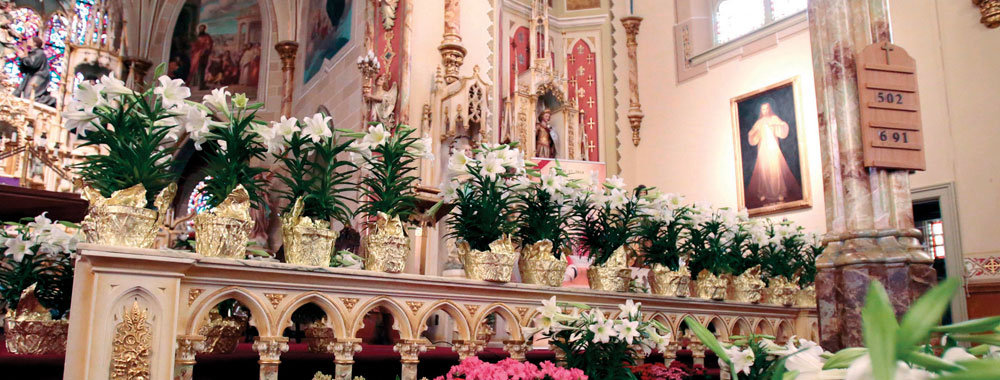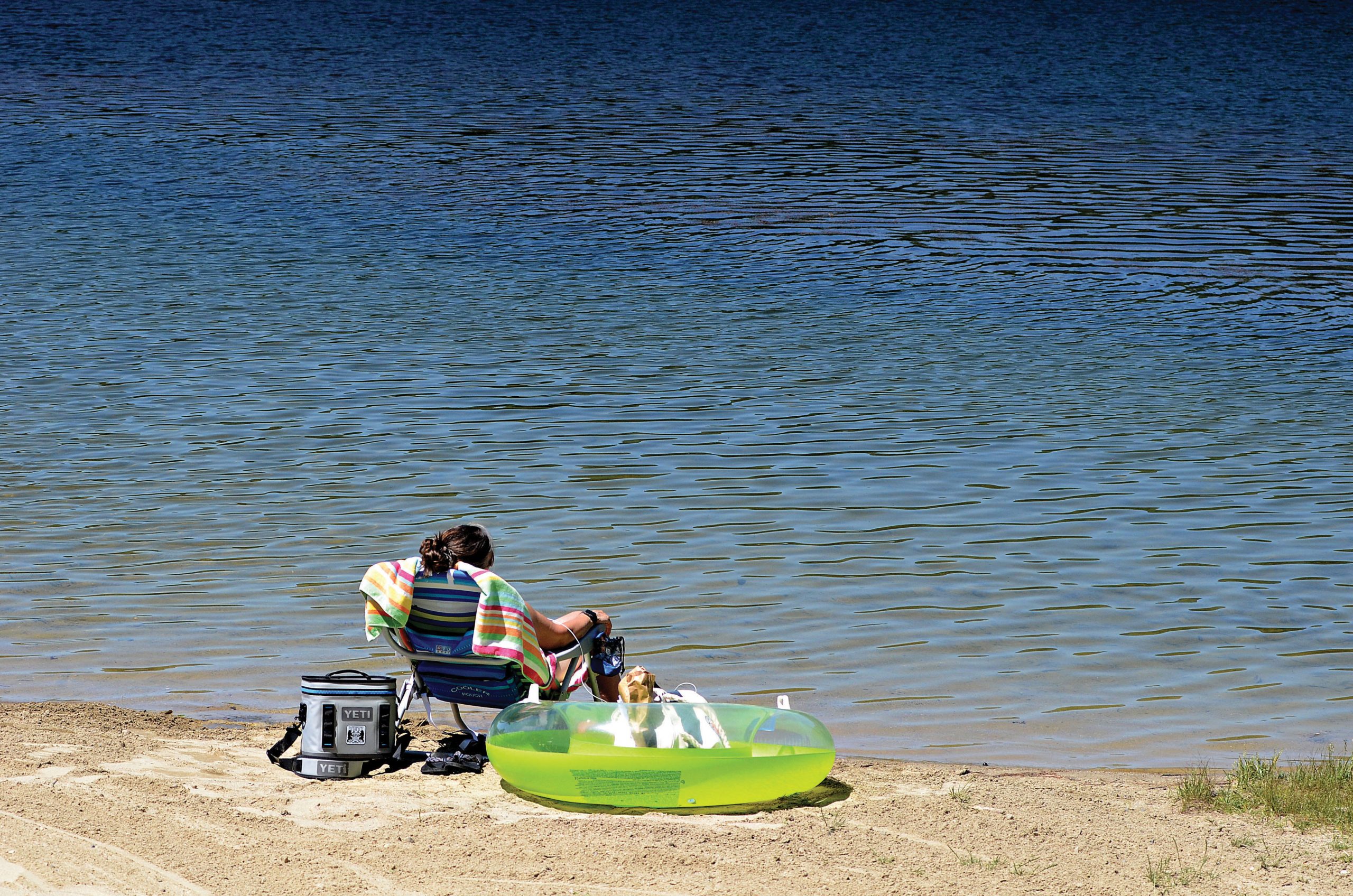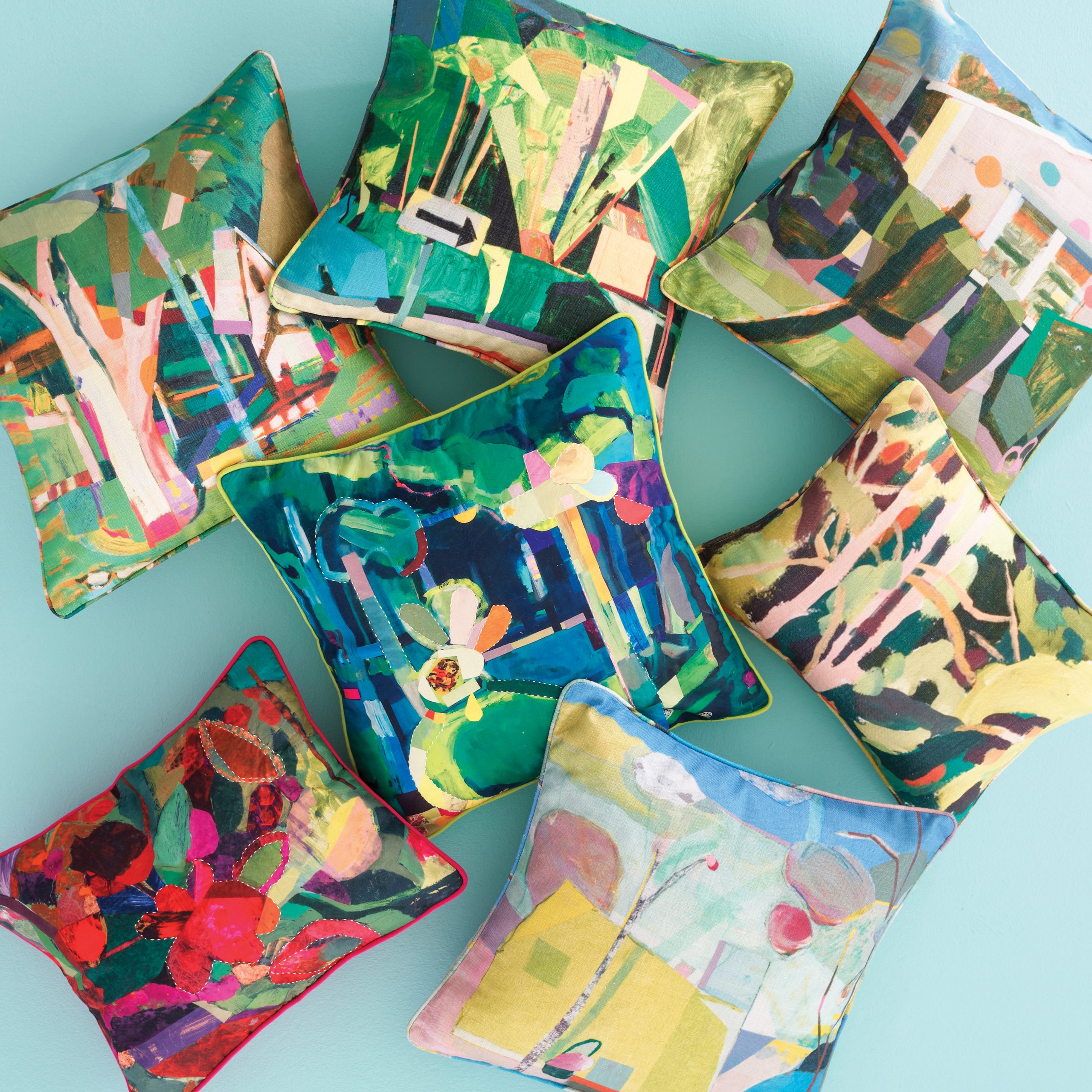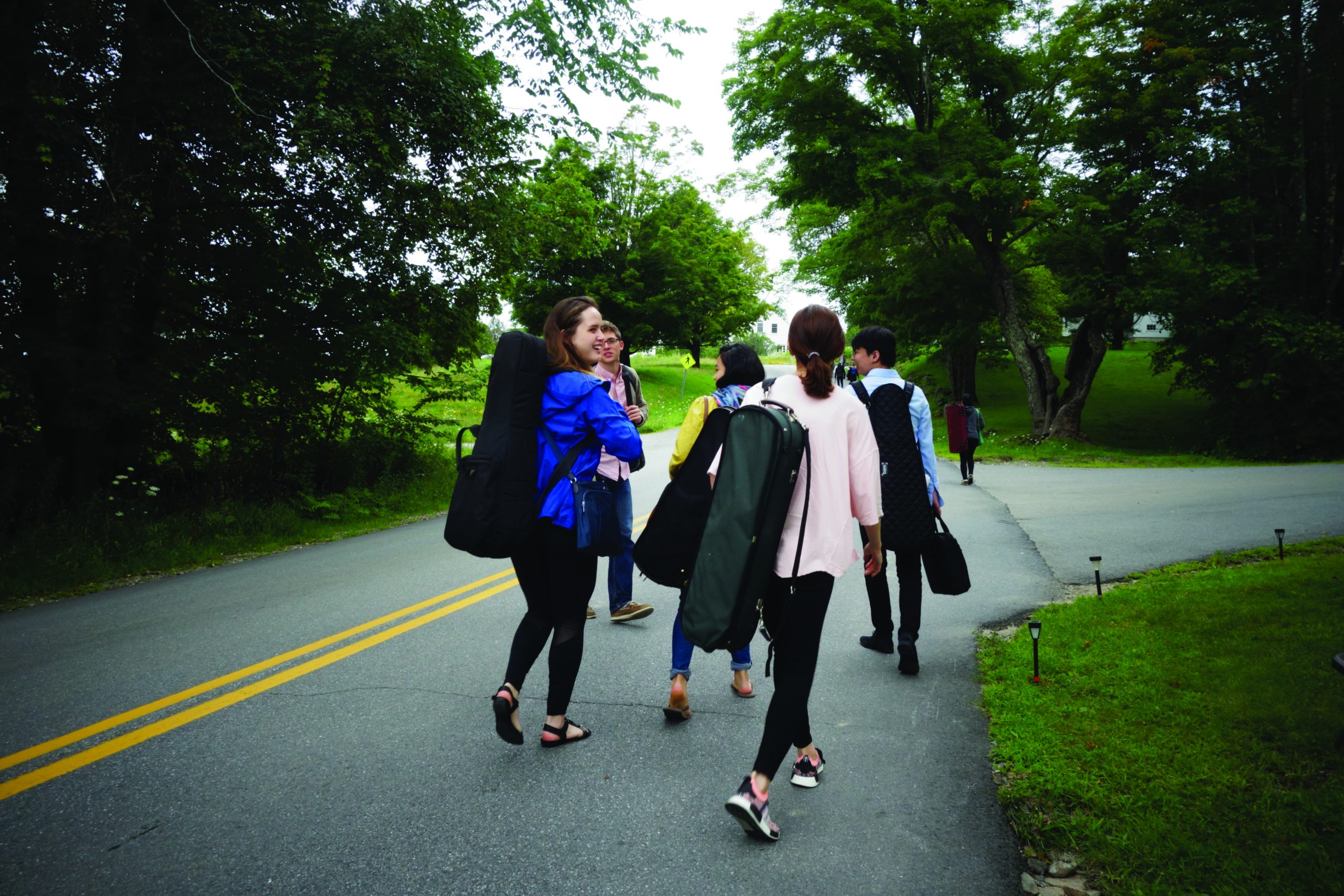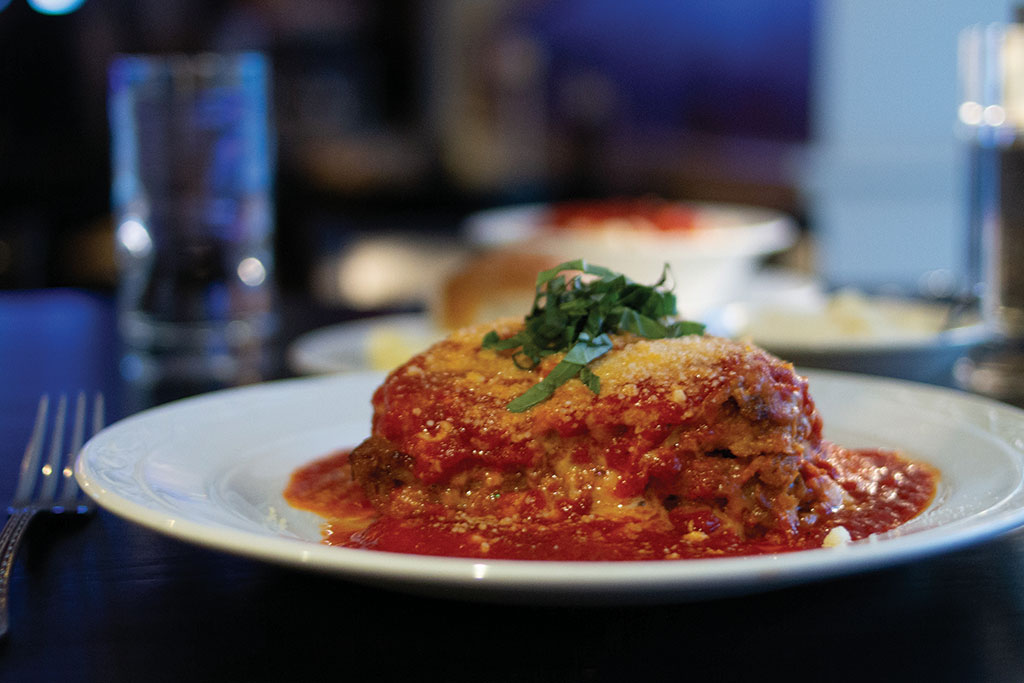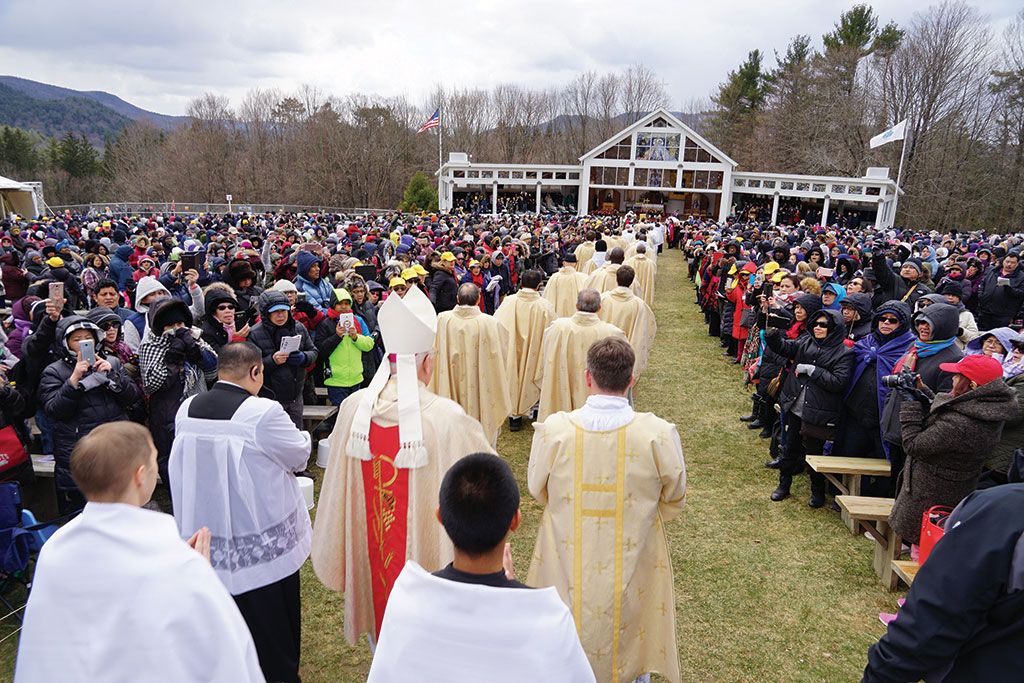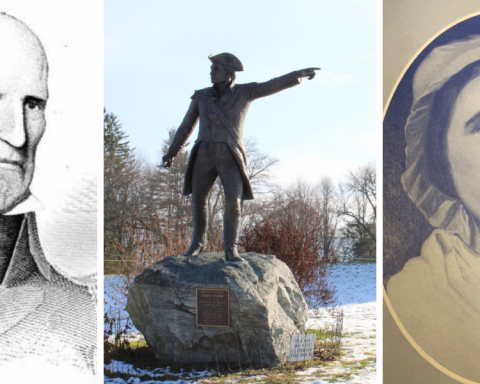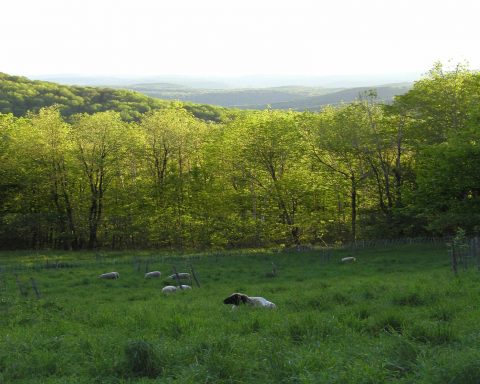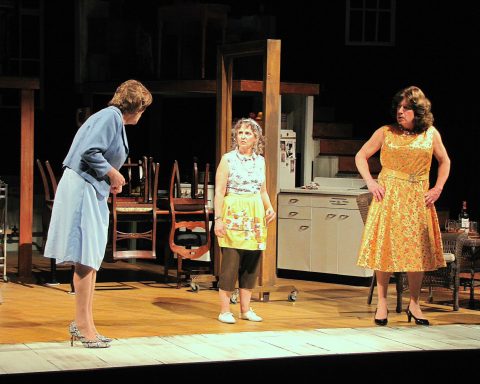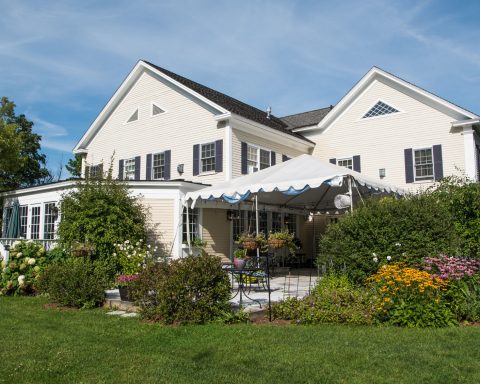Image of ‘The Divine Mercy’ said to play role in reopening of St. Stanislaus Kostka Church

By Jennifer Huberdeau
There is at least one man who believes that the reopening of St. Stanislaus Kostka Church in Adams, Mass., was an act of “divine intervention.”
On Feb. 15, 2011, the Rev. Seraphim Michalenko, a world-renowned teacher of the message of the Divine Mercy and a leading expert on the messages divulged to St. Faustina Kowalska, expressed this belief from the pulpit of his home parish. Then 80, Michalenko had just recently retired as head of the National Shrine of the Divine Mercy in Stockbridge.
The church, he said, would not close as long as the sacred image of “The Divine Mercy” remained hanging within its walls.
“Today is the feast day of the Blessed Father Michael Sopocko, confessor of Saint Sister Faustina and the man who commissioned the original image of The Divine Mercy. The Lord wants his divine mercy to be known,” said Michalenko, the image hanging behind him as he spoke.
“There is significance to the image of The Divine Mercy here, in this church. This image was the first image of The Divine Mercy to be publicly exhibited and enshrined in the entire Western Hemisphere.”
The day was one for celebration. An around-the-clock vigil had been kept by parishioners for 782 days. At long last, a four-page decree had arrived from the Vatican in Rome and it called for the reopening of the church.

“I believe the Lord wants people to know of his divine mercy through this intervention,” Michalenko said.
The Polish-American church, founded in 1902, was one of two in the town closed by the Roman Catholic Diocese of Springfield on Jan. 1, 2009, as part of a plan to consolidate parishes in areas of dwindling population and economic hardship.
Parishioners had taken up residence in the church after its last Mass on Dec. 25, 2008, and appealed the decision to close their church. The diocese claimed that it was necessary to merge the town’s three parishes and close two of the three building for financial reasons. St. Stan’s parishioners appealed on the grounds that their parish was the most financially solvent of the three.
The diocese would appeal the Vatican decree, and the vigil would carry on for another year, officially ending after 1,150 days, on Feb. 18, 2012. On that day, the diocese announced that it would reopen St. Stanislaus as a mission church of what is now known as St. John Paul II Parish.
‘The Divine Mercy’ painting
The image Michalenko referred to, a painting of Jesus Christ with red and white light spreading from his chest, first came to the church in the mid-1940s.
According to reports, it was to remain at the church until it could be transferred to its permanent home with the Marians of the Immaculate Conception, who were building their home at Eden Hill in Stockbridge, home of the National Shrine of the Divine Mercy. The painting was never moved.
Michalenko, then an altar boy at St. Stan’s, was charged with caring for the painting and was tapped to help clean the residence in Stockbridge. He would later join the Marian order. In 1979, he was appointed vice postulator in North America for Sister Faustina’s canonization.
St. Faustina, a Polish nun, had visions of Jesus Christ from 1931 until her death in 1938. She said he asked her to have the image of The Divine Mercy painted, and promised to grant special protection and mercy to any city that venerates the image, any home that displays it and any person who prays before it.
The image arrived in the United States in 1941, with the Rev. Joseph Jarzebowski, a Marian priest, and the order began disseminating pamphlets about the Divine Mercy across the country.
A copy of her diary would not reach the United States until photos of it were smuggled out of Poland in 1979 by Michalenko, who would later witness the miracles that led up to her sainthood. Kowalska was canonized on April 30, 2000, by Pope John Paul II.
Jennifer Huberdeau is editor of UpCountry magazine. She also pens the column, “The Cottager,” for Berkshires Week and The Shires of Vermont.
